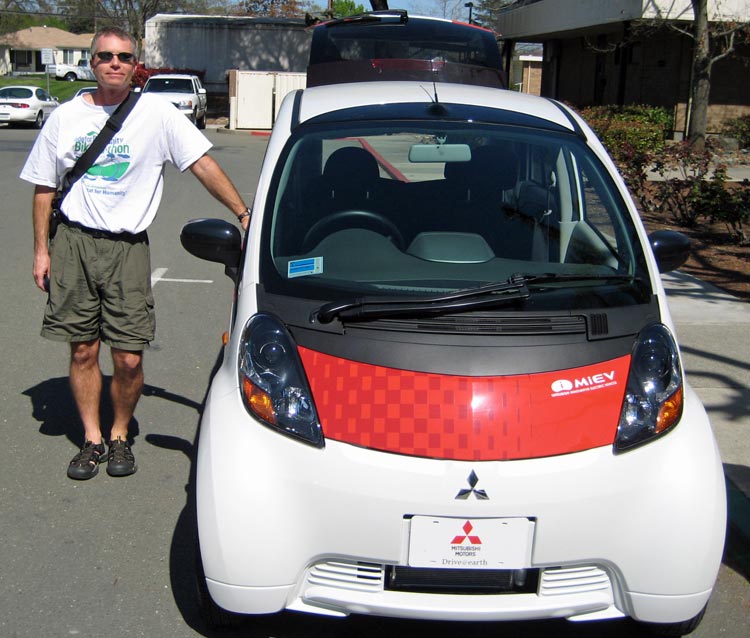
March 19, 2009. Vacaville, CA.
Today I got to drive a Japan-spec Mitsubishi iMiEV. And while this thing may look like a low-speed NEV, it most definitely is not. This car has a governed top speed of 81 mph, and a range of 76 miles. It seats four full-size adult males comfortably, and accelerates and handles smartly with that load on board. There is precious little cargo space - but as a people mover, I just can't see doing it any more efficiently. This is the ultimate commute vehicle. With the wheels placed at the extreme outboard edges of the vehicle, the passenger compartment is maximized (as well as handling and road feel). And what looks like a diminutive car on the outside suddenly becomes a comfortable pod for four adults on the inside. I had tons of headroom left over, and plenty of leg/hip/shoulder room all around. The car has all the normal amenities of power windows/mirrors/steering/brakes along with HVAC and stereo. The throttle and braking regeneration is seamlessly blended. This is a REAL car, folks, once you get over the outside dimensions. It has enough power to do anything that you need a freeway-capable car to do. With four large guys onboard, I was somewhat astonished at the acceleration. This is no Tesla Roadster, but it pulls away with every bit as much authority as the Rav4EV. When I think about carpooling in a vehicle like this, I almost get giddy. Shuttling a few guys to work in this instead of a solo driver in a Prius? Just no contest.
The faults I can find include a charge rate (from 120 V or 240 V) of just 9A - and this will equate to seriously long charge times. The solution, of course, is to use their optional 50 kW DC fast charger which will fill the battery in just a matter of minutes. The other issue I have is that there is no way to "coast." There is always some regen to mimic a gasoline car in compression. You can add a bit more regen with the shift lever, but there is no way to defeat it. To me this is an easy-to-rectify omission. The reasoning I was given is that they want the car to feel just like any other car. And that's fine! Just allow those of us who wish to have no regen a way to turn it off. A little button on the shift lever comes to mind!
Specs:
It is a cute little thing. The "hood" becomes the windshield which becomes the roof. Very aero all the way around. I have this overwhelming urge to hug it and protect it from the dangers of the word's gasoline cars.

The front wheels could not be moved further forward, nor the rear wheels further backward - and still have them attached to the same car!
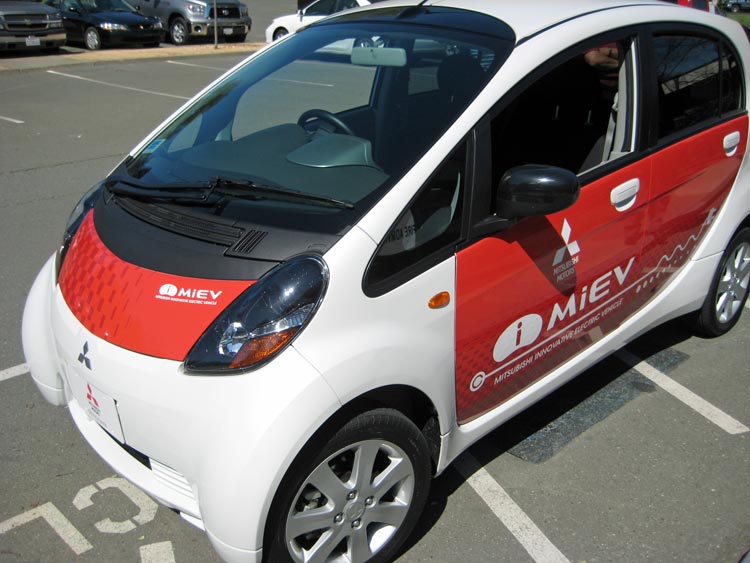
The "fuel" door here covers the fast-charge inlet. Fast charging will only happen from a dedicated off-board charger. Other charge options are on the other side of the car. The fuel door shown here is really the only indication that this car started life as a liquid fuel car in 2005. By 2006, it was well on the way to becoming a full ground-up EV. Much like the Rav4EV, these cars are not conversions - they are designed to be built up either way.
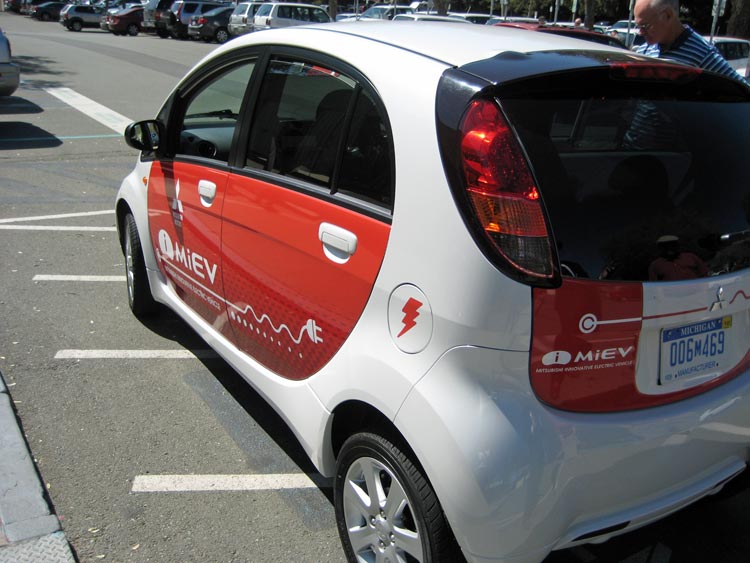
Cute, right? I mean in an almost painfully functional way. It reminds me of a bicycle. This car seems to have exactly what is needed for the job. And nothing is wasted on the fluff.
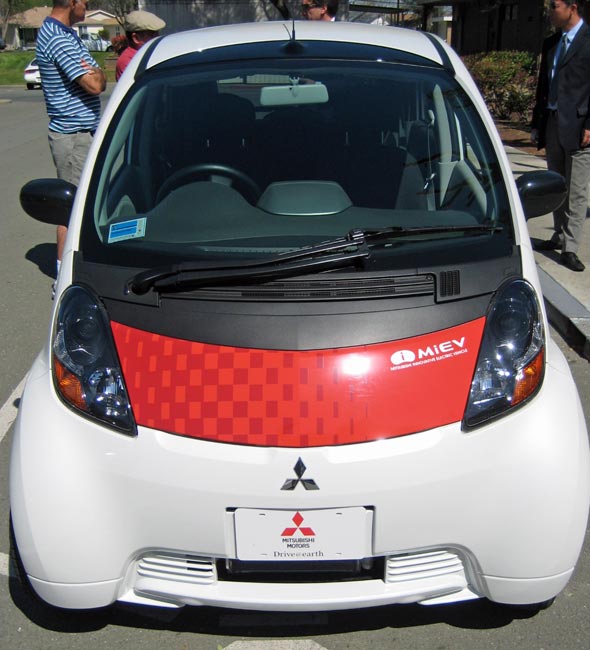
Interior is spartan, and highly functional. Nothing is wasted here, and nothing is lacking except for expensive plush touches you pay lots of money for on other cars. The fit and finish are excellent, and everything just works as it should. The seats look somewhat plain, and are deceivingly comfortable and supportive.
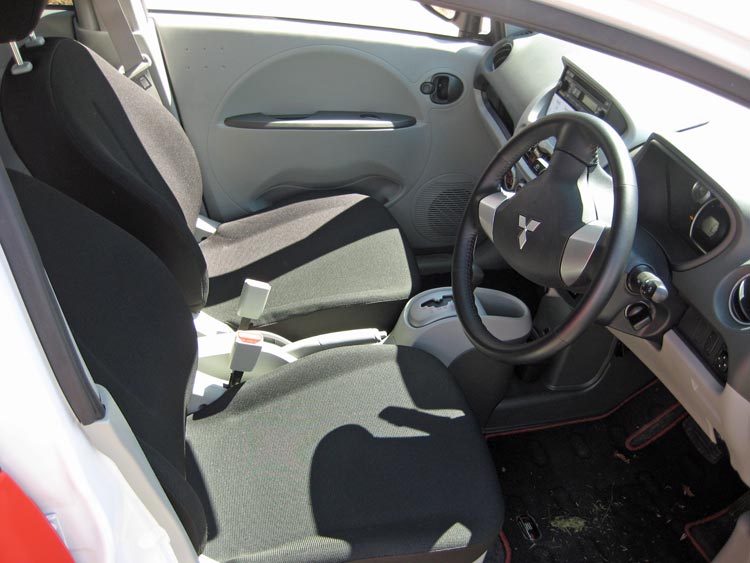
The note posted under the stereo is just speedo conversions. This is a Japan-spec car with the wheel on the right, and all indicators in metric.
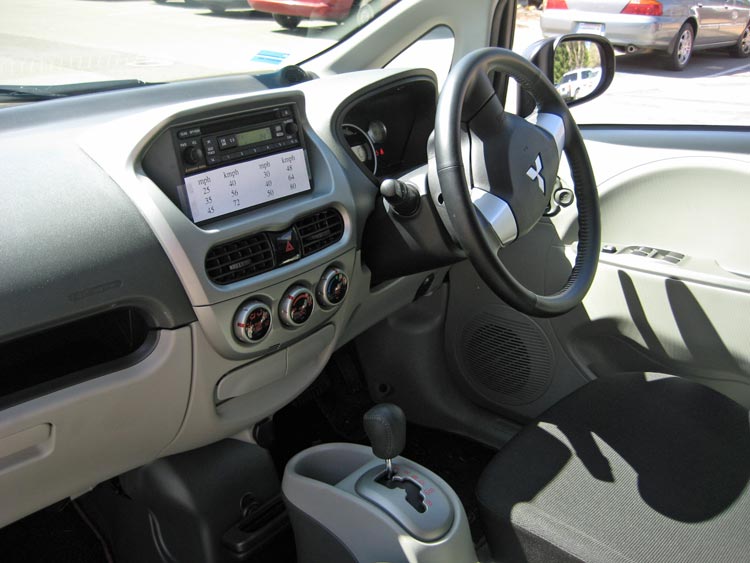
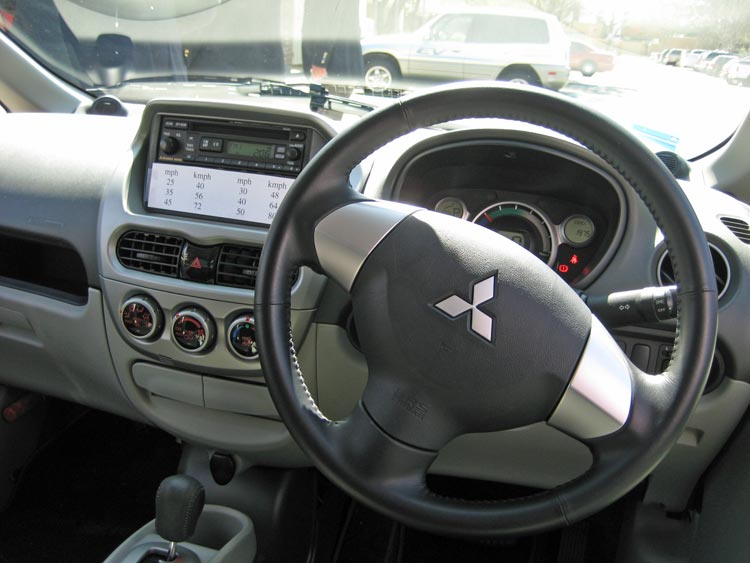
I was surprised at how uncoordinated I am with my left hand. Seems simple to pull the shift lever down to D, right? Well, not so much when you aren't used to it!
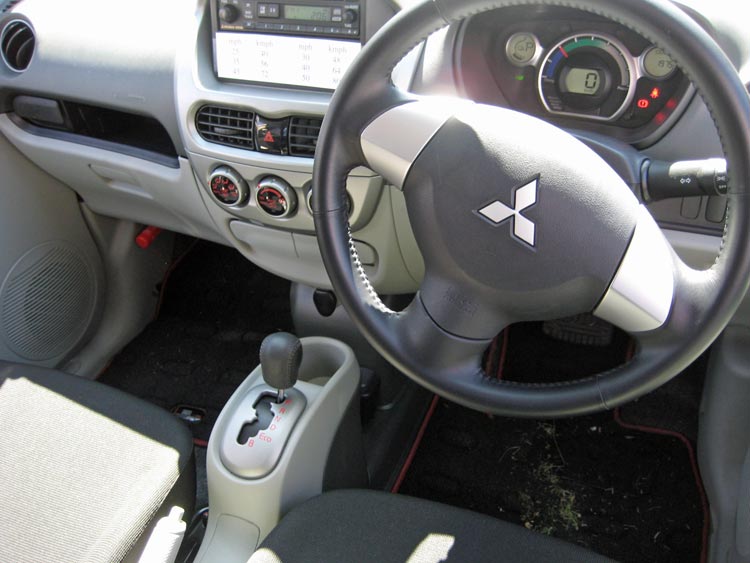
The seating in every position was surprisingly comfortable and roomy. I absolutely did not expect this. Especially in the back seat with three other full-size humans in the other seats. Leg room AND head room in a car this size? I wouldn't have believed it either.
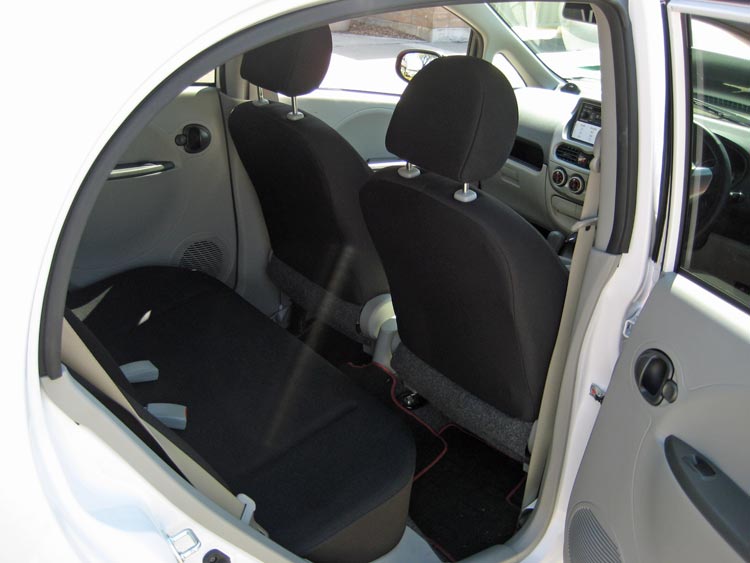
The cargo area with a 120V and 240V charge cord. The rear seat backs fold down to extend this flat cargo area all the way up to the back of the front seats. With only two people, this car can tote a relatively large load. With four passengers... not so much.
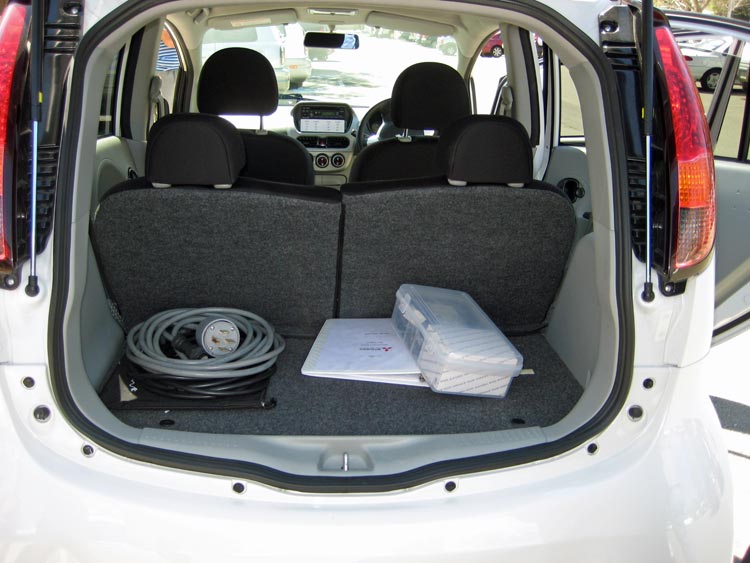
Under the cargo floor we find the charger and power electronics tucked nicely out of the way. Spare tire? Doesn't look like it, but I didn't ask.
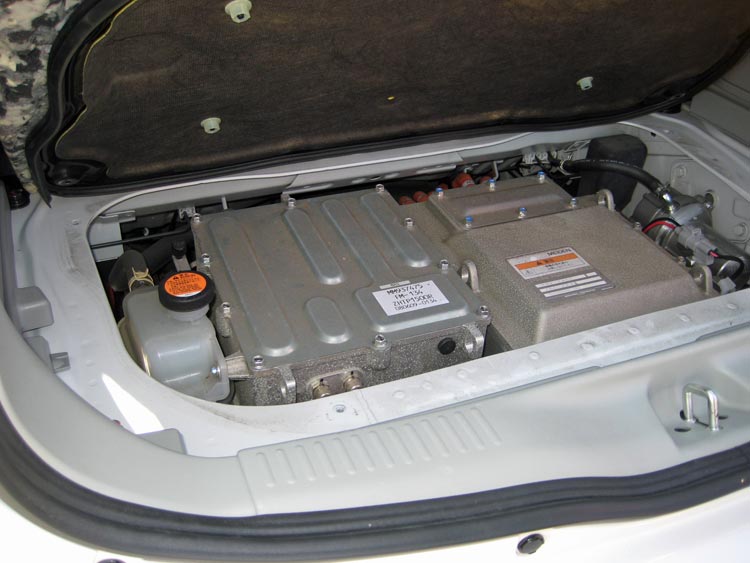
And this is the power input on the other side of the car. Here you plug in your standard power cord - either 240V or 120V. The car detects what is offered and charges accordingly.Max charge rate is 9A. I'm afraid that those little pins tell the (low-current-charge) story.
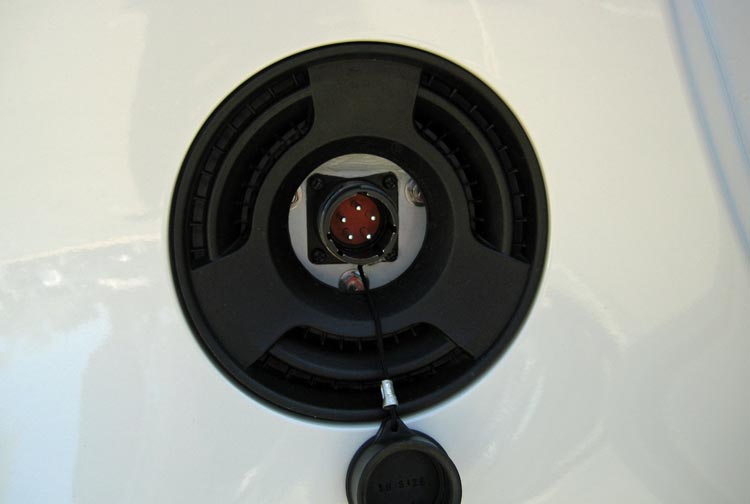
The good news is that the other side of the car has the DC fast charge inlet. Chadmo, of course.
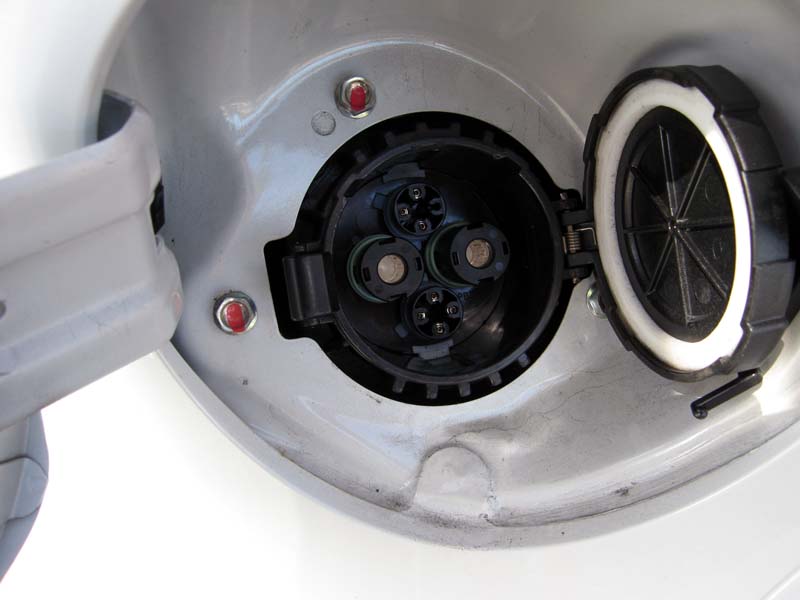

Video taken from the back seat after my turn at the wheel. Talking with Dave Patterson.
What sort of car works best after a disaster?
 |
Click for |